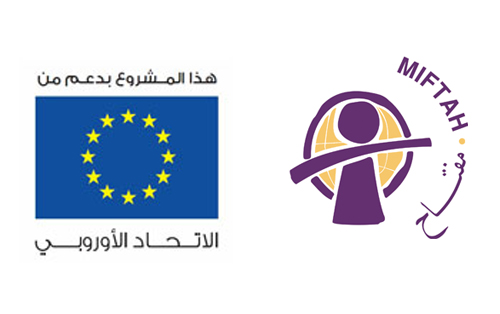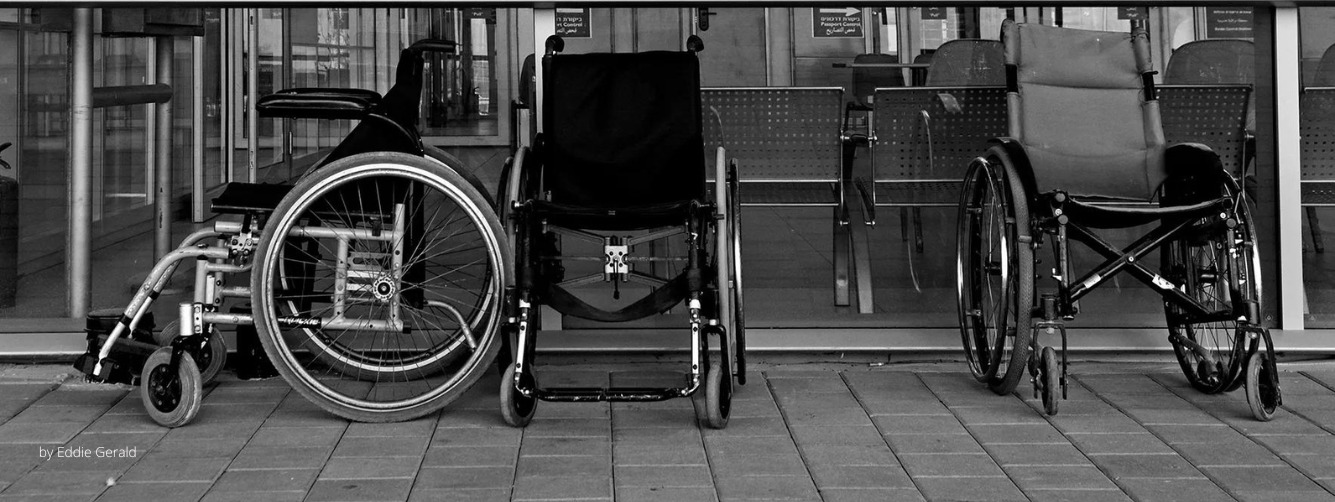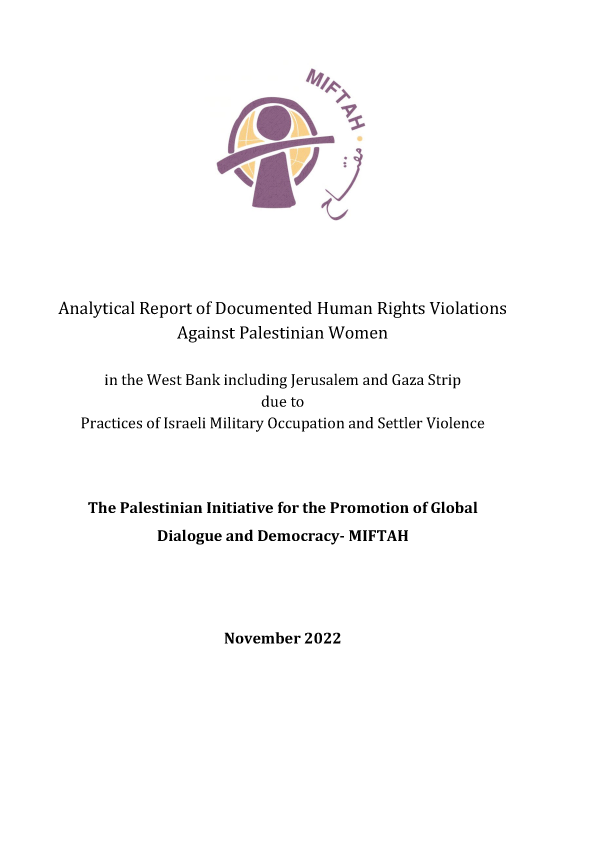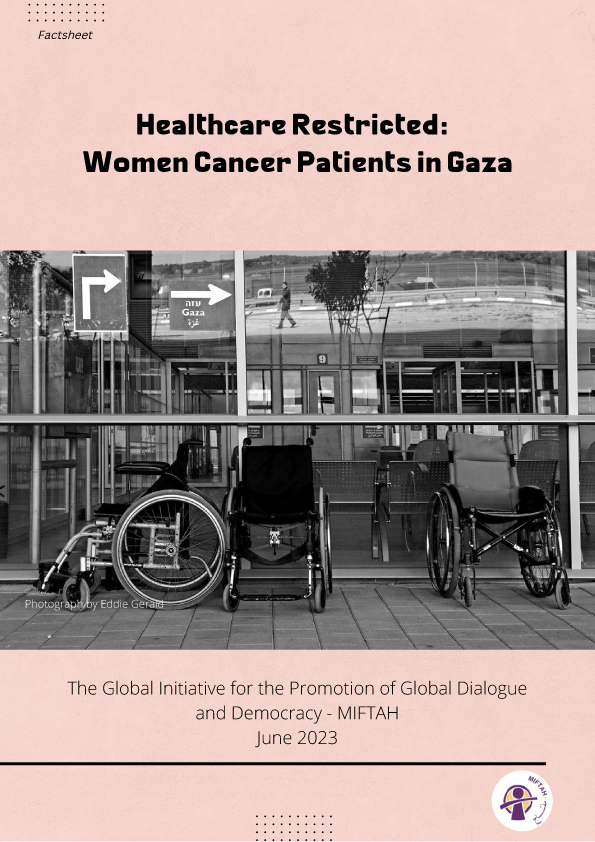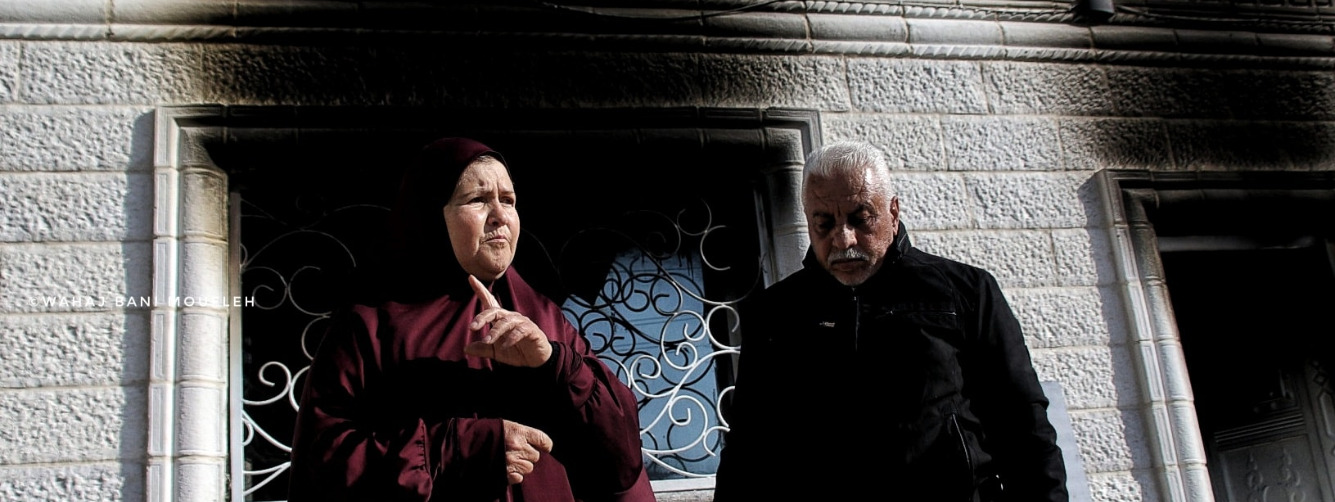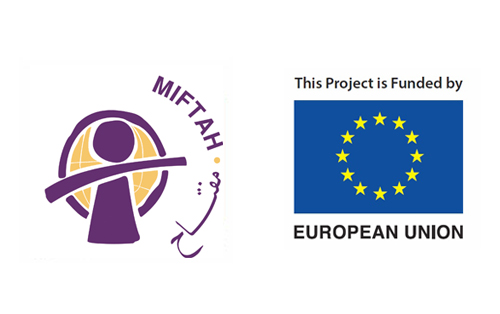
Executive Summary:
This policy paper discusses the reality of trade and tourism in the Old City of Hebron in light of the Israeli violations, such as the deployment of nearly 100 military checkpoints, and settlers’ attacks on Palestinians and foreign supporters. The paper also highlights the Israeli military decisions to close down numerous shops and main streets in the Old City of Hebron, such as Al-Shuhada street. The paper also sheds light on the Israeli restrictions on religious freedom, especially in the Ibrahimi Mosque, as well as hindering access to it through barriers. This turned the Old City (which is supposed to be a prominent tourist attraction) into a closed military zone and prevented touristic and commercial activities therein. Israel also aims to get rid of all Palestinian residents and international supporters/activists in the Old City of Hebron, after having terminated the Temporary International Presence in Hebron (TIPH). This comes in light of including the Old City of Hebron and the Ibrahimi Mosque in UNESCO’s list of “World Heritage in Danger”.
Introduction:
The Israeli settlement regime in the heart of Hebron created difficult conditions that significantly affected the tourism and trade sectors. These can be summarized as follows:
The Old City of Hebron is subjected to an Apartheid regime. Many of its roads are exclusively designated for settlers and Palestinians are prohibited from using them. In other roads, it is allowed for a Palestinian to go on foot but not to drive, whereas other roads allow Palestinians to drive but not to walk. In the Old City, there are homes where residents are not allowed to enter from their house door, hence they turned their windows into doors or opened new doors for their homes. In other cases, local Palestinian residents are not able to access their homes except by walking on the roofs of adjacent houses. There are also neighbourhoods where a Palestinian cannot enter except if s/he is a resident of the neighbourhood, thus preventing them from receiving any visitors. In other neighbourhoods, it is not allowed for a Palestinian to enter except through security gates and physical inspection checkpoints. These procedures were introduced to facilitate the life of illegal settlers at the expense of local Palestinians. According to the United Nations Office for the Coordination of Humanitarian Affairs (OCHA) in the Occupied Palestinian Territory, there are 22 Israeli settlements in the Hebron Governorate, as well as 15 settlement outposts and 4 industrial settlements, which include a total of approximately 19,000 Israeli settlers.
These Israeli practices and measures have put the trade and tourism sectors on the brink of collapse. What further aggravated the situation was Israel’s expulsion of 65 international observers from TIPH (Temporary International Presence in Hebron) on January 31, 2019. This is quite unfortunate because TIPH was the only international body that had a protective presence and was authorized to reach any part of the city on foot during the years 2015-2019. Moreover, they had direct communication channels with the Office of the United Nations High Commissioner for Human Rights (OHCHR) to urgently deal with various matters.
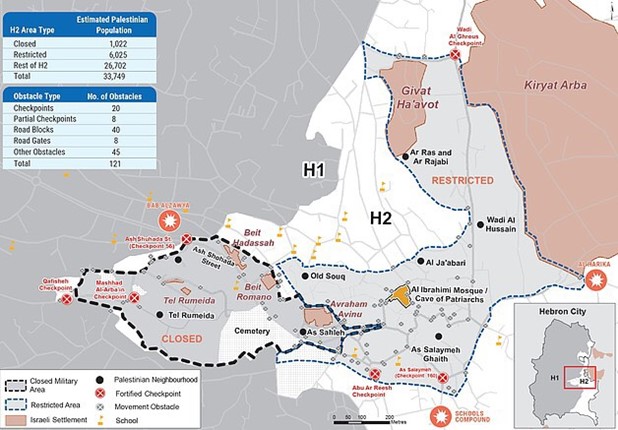
Policy Paper Objective:
The policy paper aims to present policy recommendations to advance the trade and tourism sectors in the Old City of Hebron and confront and halt the Israeli violations.
Policy Problem:
The paper seeks to address the following policy problem:
- What policies should be adopted to limit the Israeli measures that directly affect the trade and touristic life in the Old City of Hebron?
Reality of the Trade Sector in the Old City of Hebron:
An assessment by Norwegian Refugee Council (NRC) in 2019, concluded that the economic impact of Israeli measures is devastating. Moreover, a study on the impact of Israeli measures on the economic situation in the Old City of Hebron, indicated that the total direct and indirect losses resulting from the closure of shops due to Israeli military orders are estimated at 485 million U.S. Dollars in the past 25 years. This means that the Old City of Hebron incurred a monthly loss of about 1.6 million U.S. Dollars as a result of these measures.
It was also indicated that 62.4% of the closed shops were shut down during the Second Intifada, and the rest were closed due to Israeli military orders. For example, Al-Shuhada Street saw the closure of 304 shops, 218 of which were closed due to military orders. Additionally, the Israeli authorities issued 21 military orders that led to the forcible displacement of dozens of Palestinian families from the Old City, whose number totaled 6,000 persons.
According to Hebronite economist Raja’i Qaisi, the economic consequences of the prolonged closures in Hebron were disastrous. For example, at the first level of closures, 700 stores were entirely closed down either due to military orders or as a result of restrictions and limited access, thus leading to a loss of about 200,000 U.S. Dollars per store. Meanwhile, the second level of closures included the partial closure of 700 stores due to the aforementioned restrictions. This is because of the threefold increase in the distance, cost and required time for reaching these stores as a result of closing key roads (especially Al-Shuhada and Al-Shallala streets), which made it difficult for clients and suppliers to access them.
The remaining stores (about 1,000) also saw significant losses (estimated at 70 million U.S. Dollars). It is a well-known fact that the Old City of Hebron was historically considered an important commercial center, where about 5,000 persons were working in different fields. However, many of these persons are currently unemployed and became a burden on society. The closure of businesses deprived these workers of the only job opportunities available to them. This forced hundreds of Palestinian families who live in the areas of friction (most of whom are very poor) to leave their homes and apartments in search for other alternatives, thereby increasing their burdens due to unaffordable rental and building costs. Consequently, 75% of the remaining Old City residents are currently living below the poverty line. A survey conducted by the Palestinian Ministry of National Economy indicated that the poverty and unemployment rates have been steadily rising since 1997 (Badil Center, 2016). Also, the average income per household in the “H2” area of Hebron is approximately 160 U.S. Dollars per month, whereas the average income in the West Bank is 405 U.S. Dollars.
As mentioned by the Norwegian Refugee Council (NRC) in 2019: “At the present time, after 22 years from signing the protocol, the remaining work is assessed at 10%. It was also seen that eight out of every ten adults are unemployed, and that 75% of families live below the poverty time” (Land Research Center). According to a study conducted by the International Committee of the Red Cross (ICRC) in 2005, the average monthly income of Palestinian households in Hebron’s “H2” area is only 700 Shekels [which is equivalent to 150 U.S. Dollars per month].
Moreover, the Hebron Rehabilitation Committee (HRC) pointed out that, out of the 650 shops and warehouses located in the old market (“Al-Qasaba”), only 10% are currently operating, and at a much lower capacity (Al-Shabaka, 2009).
Reality of the Tourism Sector in the Old City of Hebron:
Israeli policies and measures are the main challenge facing the tourism sector in the Old City of Hebron. This sector is intentionally undermined by Israel all year long. For example, Israel provides a safe passage to foreign tourists from the back side of the Ibrahimi Mosque because it is under their control, thus weakening the touristic movement in the old Palestinian market. Moreover, Israeli tourist companies bring tourists in Israeli busses within their biased and targeted touristic itineraries. Israel also provokes Palestinian worshipers and searches them intensively at the electronic gates and military checkpoints leading to the Ibrahimi Mosque and Old City of Hebron, as well as preventing the Muslim call to prayer. This affects the movement inside the old market that leads to the Mosque. For example, the adhaan was prevented 634 times [in the Ibrahimi Mosque] in 2020.
Various forms of Israeli violations are committed against the tourism sector. These include the following:
- Deployment of nearly 100 military checkpoints inside the Old City of Hebron, which poses a threat to both tourists and local residents, thus crippling the tourism and trade activities therein. These checkpoints and their related measures violate people’s privacy and affect their freedom of movement and sense of security. The checkpoints are also frightening for many tourists and visitors from outside the Old City, hence they refrain from entering the city and wandering in it. This greatly affects tourism and trade activities inside the city despite including the Ibrahimi Mosque (which is an important historical-religious site) in UNESCO’s list of World Heritage in Danger. Also, the Old City of Hebron was considered to be “of exceptional universal value”. Therefore, the Ibrahimi Mosque and other historical sites in the Old City of Hebron are supposed to constitute major tourist destinations for visitors in Hebron. Despite the various attempts to revive and rebuild the Old City, most of the efforts were in vain. This is because of the unsafe situation of Old City residents, who are surrounded by radical Israeli settlers. These settlers are guarded by hundreds of armed Israeli soldiers and continuously attack Palestinian residents and their properties.
- Settlers constantly assault and harass international activists and Palestinian citizens, which created an unsafe environment for tourists and locals.
- Israeli poses a direct threat to archaeological and religious sites in the Old City of Hebron, whereas the Old City of Hebron and the Ibrahimi Mosque were included in UNESCO’s list of World Heritage in Danger.
- Israel provokes Palestinian worshipers and places heavy restrictions on them, as well as searching them intensively each time they enter the Ibrahimi Mosque. These practices constitute a violation of people’s right to worship, and they intentionally aim to weaken religious tourism in this landmark.
- Israel organizes tourism programs in the Old City of Hebron in a way that propagates the settler-colonial narrative against Palestine. At the same time, they support the Israeli tourism sector and aim to weaken Palestinian tourism. This is part of the Israeli economic settlement project in the occupied Palestinian territories.
- Israeli authorities prevent the transport and entry of goods into the area under their control in the Old City of Hebron.
- Israel violates a number of international human rights charters and conventions that guarantee the right of all persons to worship, move freely and enjoy economic rights.
In light of what was mentioned above, the paper presents the following alternatives and recommendations to relevant Palestinian and international parties, to enable them to formulate policies that help create a better trade and tourism sector in the Old City. The paper assumes that these suggestions can be implemented simultaneously, in order to have a maximum impact within a reasonable period of time.
First Alternative: Raise the level of awareness about tourism and trade in the Old City of Hebron, through:
Organizing awareness-raising programs and campaigns for school and university students, Old City residents, and merchants. This can be done by publishing brochures and booklets related to heritage sites in the Old City. It is also recommended to organize educational and touristic trips for interested school and university students from all Palestinian governorates, as well as implementing educational programs (including tourism education) for students from or outside the Old City. These programs can be conducted in cooperation between the Palestinian Ministry of Tourism and Antiquities, Ministry of Education, and national institutions in Hebron. Efforts should also be exerted to put an end to the destructive effects on the tourism and trade sectors, as well as changing the negative stereotypes about Palestinians internationally. It is also helpful to prepare informative materials about trade and tourism, such as issuing brochures about Hebron’s Old City, developing a touristic map, publishing the names of touristic areas and sites, and printing the addresses of Old City shops for easy access. It is also recommended to add guiding signs and develop interesting touristic routes, such as oil presses and maqams.
Second Alternative: Activate commercial marketing and tourism media, through the following activities:
Marketing and promotion of cultural, commercial and touristic sites, as well as encouraging residents and visitors to visit the Ibrahimi Mosque and the Old City of Hebron. Also, there is a need to encourage tourism offices to promote Palestinian heritage sites and goods in the Old City of Hebron, both within and outside the country. Academic institutions should also be encouraged to highlight the importance of Hebron’s Old City from the cultural and historical points of view, as well as encouraging people to visit this valuable location. It is also important to strengthen commercial and tourism security in the Old City, as well as licensing street vendors and oriental antiquity stores and putting an end to the phenomenon of beggars and pickpocketing. Furthermore, we recommend the provision of public health facilities, along with encouraging private companies to establish hotels and restaurants, provide special parking lots for cars and tourist buses, and increase investments in the Old City.
Third Alternative: The Palestinian Ministry of Tourism must formulate a robust national plan for the Old City of Hebron
This plan must focus on bringing international delegations to the Old City of Hebron to familiarize them about the location, enhance the Palestinian narrative, support the tourism sector, and promote Hebron internationally.
Fourth Alternative: Introduce twinning programs between the Hebron Municipality and different municipalities around the world, to support the economy of Hebron’s Old City and rejuvenate its tourism.
Fifth Alternative: Call upon the United Nations Educational, Scientific and Cultural Organization (UNESCO) to protect the Old City of Hebron, which was included in UNESCO’s list of “World Heritage in Danger”.
Sixth Alternative: Promote the Palestinian narrative vis-à-vis heritage sites in the Old City of Hebron
This can include preparing virtual tours to introduce tourists to the Old City’s valuable historical and archaeological sites.
Seventh Alternative: Reactivate the shops of Hebron through e-commerce, with the help of the Hebron Chamber of Commerce and Industry
Since there are many obstacles that prevent people from accessing Old City shops, e-commerce tools can be used to sell their products to potential clients outside the Old City. Such a plan must be formulated to reactivate the work of Old City merchants and enhance their survival.
This Policy Paper was prepared as part of the “Youth as Human Right Defenders” project funded by the European Union The content of this document does not reflect the official opinion of the European Union. Responsibility for the information and views expressed in the study lies entirely with MIFTAH.




